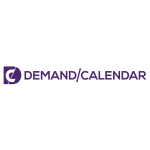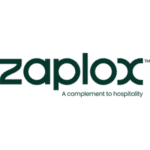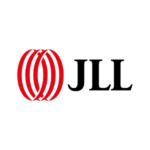 Hotels are often biased when creating offerings and packages for potential guests because they make decisions based on a hunch or past experiences that are no longer relevant. The missing link is to collect and analyze data to get elevated insights into guests’ needs and behaviors.
Hotels are often biased when creating offerings and packages for potential guests because they make decisions based on a hunch or past experiences that are no longer relevant. The missing link is to collect and analyze data to get elevated insights into guests’ needs and behaviors.
The key to becoming successful in growing guest spending is to personalize offerings throughout the guest journey. Every hotel’s dream is to maximize the average revenue per guest and, at the same time, maximize guest satisfaction. These things tend to go hand-in-hand. The more the guest spends, the happier they will be with the experience. Let’s examine which data a hotel needs to implement a successful guest personalization process.
Collect the right data
Hotels often assume they have all the answers in the data stored in all their siloed systems. It is just a matter of extracting, compiling, and analyzing the data. However, the problem is that the hotel has not collected the correct data, and therefore personalization will be too vague and only partially relevant to the guest. As a result, the offering misses the target and will not produce revenue as expected.
The reason for traveling
The reason for traveling is the most critical piece of data a hotel needs to be able to customize an offering. Still, many hotels have difficulties capturing this information before attracting them to book. Hotels can assume that many guests travel for business during the week, while many travel for leisure over the weekend. Based on assumptions, hotels can segment offerings. The hotel should capture the information upon check-in by asking the guest and then have historical data to be analyzed and used for future decisions.
The travel reason to the destination is critical since it provides more specific and contextual information about the guest’s needs and preferences for their specific stay. For example, a guest traveling for a business meeting has different requirements than a guest traveling for a family vacation. By understanding the guest’s reason for traveling, hoteliers can tailor their offerings and services to meet their needs, such as providing a business center, early check-in, or family-friendly activities.
The home of the guest
The second most critical piece of data is from where the guest comes. The guest has different needs depending on the length of the trip. The knowledge of the guest’s home might also capture cultural differences vital in how the hotel communicates to the guest before booking, during the booking process, pre-arrival, arrival, and stay. Here are some examples of how knowing where the guest comes from can help personalize offerings.
- Language: Communication with the guest in their native language during the guest journey and stay is vital to help guests feel more comfortable and enhance their experience.
- Cultural preferences: If a guest comes from a country with specific cultural preferences, such as dietary restrictions or religious practices, offering customized amenities and services, such as halal food or prayer mats, can help them feel more at home and cater to their needs.
- Travel patterns: If a guest comes from a region with specific travel patterns, such as a preference for luxury hotels or extended stays, offering packages and services that cater to these preferences can help increase the likelihood of the guest booking with the hotel.
Understanding where the guest comes from allows hoteliers to tailor their offerings and services to meet their needs and preferences, increasing guest satisfaction, loyalty, and revenue>
Booking behavior
Knowing a guest’s booking behavior is critical to personalizing offerings and services to hotel guests. A guest’s booking behavior can provide valuable insights into their preferences, habits, and needs, creating customized experiences more likely to appeal to the guest. Here are some ways in which knowing a guest’s booking behavior can help personalize offerings.
- Room preferences: By analyzing a guest’s past booking behavior, hoteliers can understand their preferred room type, floor, view, and other amenities and offer options that align with past preferences.
- Loyalty programs: If a guest is a member of a hotel’s loyalty program, hotels have insight into their booking behavior to personalize loyalty program offers and rewards based on their past spending and stay history.
- Room rate: By analyzing a guest’s past booking behavior, hoteliers can understand their spending patterns and offer customized room rates and offers that match their budget and preferences.
Create micro-segments
Creating microsegments is a critical step in personalizing offerings to hotel guests. Microsegments are small groups of guests with similar characteristics and preferences, which hotels use to tailor offerings and marketing messages to each group. Here are some steps to create microsegments.
- Collect and analyze guest data: Collect the travel reason, the home of the guest, and the booking behavior. The data provides insights into guest preferences, behaviors, and needs, which the hotel uses to create microsegment offerings.
- Identify common characteristics: Once you have collected guest data, the next step is identifying common factors to group guests into microsegments.
- Create microsegments: Based on the common characteristics, you can create microsegments that group guests with similar preferences and behaviors. For example, you may create a microsegment for long-haul business travelers who book early and stay for more than five nights or a microsegment for families staying on weekends who prefer family-friendly amenities and activities.
- Tailor offerings: Once you have created microsegments, you can tailor offerings and marketing messages to each group in each group’s preferred booking channel.
- Test and refine: It’s essential to test and refine your microsegments and offerings to ensure they effectively drive guest satisfaction and revenue. You can use guest feedback and performance metrics to evaluate the success of each microsegment and adjust your offerings and marketing messages accordingly.
Contribution to revenue and profits
Personalization can contribute to revenue and profits in several ways. Here are three key ways.
- Increased guest satisfaction: Personalization can help hotels provide guests with customized experiences that meet their specific needs and preferences, increasing guest satisfaction. Satisfied guests are more likely to return to the hotel, leave positive reviews, and recommend the hotel to others, leading to increased revenue and profits. Personalization can also help hotels build stronger relationships with their guests, improve their loyalty, and grow repeat business. Repeat guests are more likely to book directly with the hotel, which can reduce distribution costs and increase profits.
- Higher occupancy rates: By offering personalized experiences, hotels can differentiate themselves from their competitors and attract more guests, leading to higher occupancy rates.
- Higher average revenue per guest: Personalization enables hotels to offer customized packages and services at higher prices, leading to a higher average daily rate (ADR). Personalization can also create upselling and cross-selling opportunities by enabling hotels to offer guests customized packages and services that align with their preferences. A higher revenue per guest increases the hotel’s total revenue and boosts profits.
By leveraging data and analytics, hotels can create customized experiences that meet their guests’ specific needs and preferences and drive revenue and profits.
Final thoughts
It is easy to say that hotels should personalize the offerings to each guest’s needs and preferences. However, there are many challenges in doing this in a practical way that will make a higher contribution to revenue and profits. There are no shortcuts. Hotels must start by collecting the correct data to microsegment the potential guests. Now, hotels can start creating personalized offerings when the hotel has insights into the travel reasons, where the guest comes from, and the booking behavior. The last step is continuously monitoring the results and making necessary adjustments to ensure that the personalization produces the desired results.

CEO, Demand Calendar

Demand Calendar is an integrated marketing, sales, and revenue management software for hotels of all sizes.
































